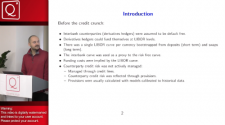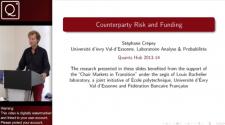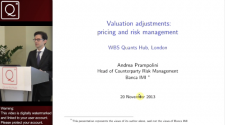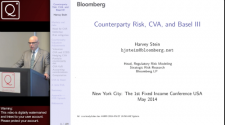Workshop view
Back to Shop
XVA: Counterparty Risk and Funding (Part 2)
Counterparty Risk and Funding (Part 2)
Session 1: (Running Time: 1:21:02)
Session 2 (Running Time: 1:39:17)
Session 3: (Running Time: 1:49:46)
Session 4 (Running Time: 1:11:59)
T. Bielecki and S. Crépey (with an introduction by D. Brigo): Counterparty Risk and Funding: A Journey with BSDEs and Dynamic Copulas. Taylor & Francis, Forthcoming.
See also the counterparty risk material on screpey.free.fr and the references therein.
Abstract:
The credit crisis and the ongoing European sovereign debt crisis have highlighted the native form of credit risk, namely counterparty risk. This is the risk of non-payment of promised cash-flows due to the default of a party in an OTC derivatives transaction. By extension this is also the volatility of the pricing of this risk, the so-called Credit Valuation Adjustment (CVA). A key related issue, especially with credit derivatives, is the so-called wrong-way risk, i.e. risk of positive dependence between the size of the counterparty risk exposure and the default riskiness of the counterparty. Moreover, as banks themselves have become risky, counterparty risk must be understood in a bilateral perspective (CVA and Debt Valuation Adjustment DVA), where the counterparty risk of the two parties are jointly accounted for in the modeling. In this context the classical assumption of a locally risk-free asset which is used for financing purposes (lending and borrowing as needed) is not sustainable anymore, which raises the companion issue of a proper accounting of the funding costs of a position (Funding Valuation Adjustment FVA). Finally since August 2007 one also saw the emergence of a systemic counterparty risk, referring to various significant spreads between quantities that were very similar before, like between OIS swap rates and LIBOR swap rates of different tenors. Through its relation with the concept of discounting, this systemic component of counterparty risk has impacted on all derivatives markets. All the above adjustments, which are interdependent and must be computed jointly, are today one of the main P&L centers of investment banks. They touch on many areas: modeling, computation, pricing, risk management, regulation, economics, legal, lobbying, politics, often in conflicting perspectives. The current trend of the regulation is to push participants to negotiate centrally (as opposed to bilaterally above) via clearing houses, and to guarantee their failure through collateralization. But such a move poses a very serious liquidity constraint on the market for margin calls abound. The aim of the course is to introduce different aspects of these controversial issues: CVA, DVA, FVA, Wrong-Way Risk, systemic counterparty risk.
PART 2
- Standard Reduced-Form BSDE TVA approach
- Beyond immersion?
- Dynamized Gaussian copula model
- Dynamized Marshall-Olkin copula model
- Wrong way and gap risks: a marked default time perspective
- Multiple curves
- The whys of the LOIS
- A Lévy HJM multiple-curve model with application to CVA computation
Academic level
Topic
CVAPublished date
3 March 2014Price
£199.00Related workshops

Massimo Morini
Interest Rate Modelling: Modern Interest Rate Modelling with Collateral, Funding and Credit (Part 2)
4 March 2014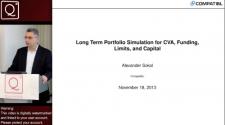
Alexander Sokol
XVA: Long Term Portfolio Simulation for CVA, Funding, Limits, and Capital
7 March 2014